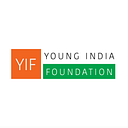#WHY25
A Think Article by Sayali Nagwekar
This week you might have seen #Why25 on social media. That was simply because the YIF — Young India Foundation — was busy celebrating International Youth Day on 12th August 2019 and relaunching the Why25 campaign in Bombay, Pune, Delhi, Chennai, and Bangalore. International Youth Day, is the day designated by the United Nations to draw attention towards cultural and legal things which impact the youth of the world. In the series of issues and impacts, one of the prominent debating topics is the eligibility of a candidate to contest an assembly election, either for center or state. Hence, the Why25 campaign. But what is this campaign all about?
India is a young country with just 28 years as the average age of the population. However, the age of our Youth Minister is 48 years, which is quite ironic. To put it into context, the interest and issues of the youth, as with any other group, should be represented by someone from that group but here that’s not the case. The policies and decisions which directly impact the youth are discussed and voted by people with at least a 20 year age difference. This leads to several ground-level conflicts and discrepancies. The major issue is that the young or new voters often don’t have representatives with whom they can relate, and even the issues of youth aren’t directly tackled in the speeches or rallies of the election campaigns. This sometimes results in dissociation of new voters with politics, which in turn can lead to a lower voter turnout. All these conflicts impact the result as older politicians win the respective seats comprehensively.
Currently, the age of contesting as a Lok Sabha and the Legislative Assembly is 25 years while for a member of Rajya Sabha is 30 years. But our organization — Young India Foundation — believes in the representation of the young by young. Hence, Young India Foundation (YIF) is filing a PIL to decrease the age of contesting election for MP or MLA. We have taken a step to ask the reasoning behind the age i.e. 25 with the hashtag ‘#Why25’.
A closer analysis of these numbers reveals some not-so-surprising inferences. India, like any other Asian country, is an age-biased nation. This simply means that the old age is generally associated with greater experience, maturity, responsibility, which results in better decision-making. With respect to politics, this inference becomes even more profound. Whereas, the young age and even those who are above the voting age of 18 are often patronized, are directly associated with immaturity. The government cites a lack of organized effort by interested youth organizations or a precise identification of stakeholders for working in the area of youth development. There is a visible gap between official youth policies and actual youth-focused interest groups’ vision.
However, the good news is that the younger people are interested in representing their peers and they do have insights and solutions about the issues. As the world changes at a rapid pace and the fourth industrial revolution takes place, young people are needed to make sense of how this new technology and social media will affect policies.
The objective of a ‘Think Article’ is to bring knowledge about policies in the sphere, in context to the youth of India and, if possible, influencing the policy process. The article has no motivation to pass any political judgments.
